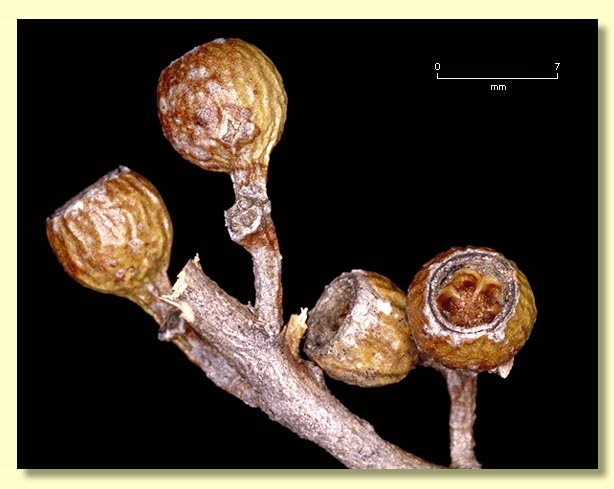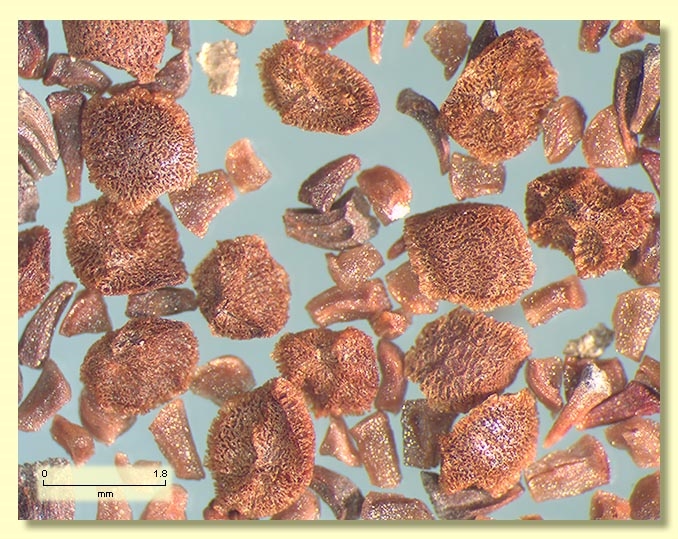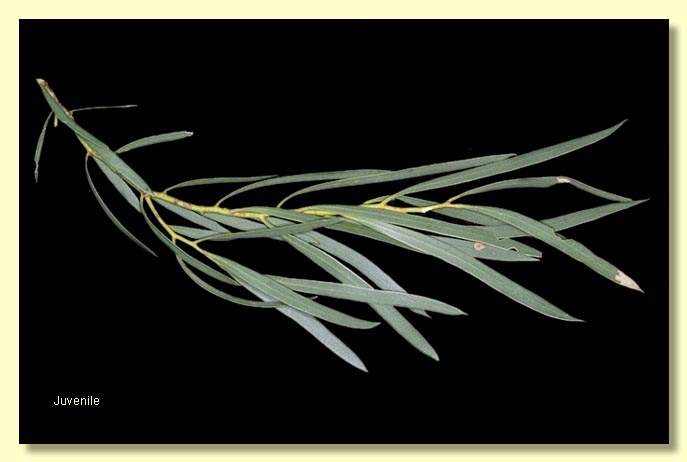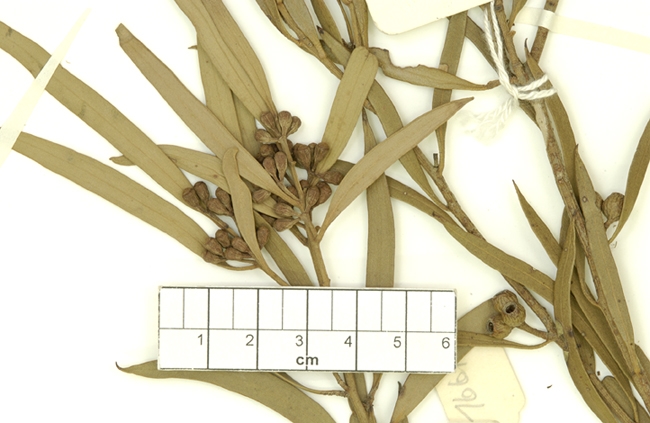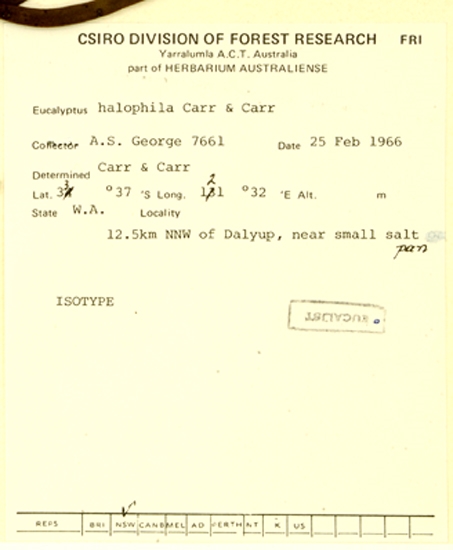Eucalyptus | Symphyomyrtus | Bisectae | Destitutae | Halophilae
Euclid - Online edition
Eucalyptus halophila
Bark rough on base of or up to half of stems, pale grey, fibrous or shedding in thick strips, or smooth throughout, white and pale grey to greenish-grey.
Branchlets lacking oil glands in the pith.
Juvenile stems rounded in cross-section; juvenile leaves sessile or shortly petiolate, alternate, linear, 4–8.5 cm long, 0.3–0.6 cm wide, green, held erect.
Adult leaves alternate, petioles 0.3–0.9 cm long; blade linear to narrowly elliptic-lanceolate, (4.3)5–8 cm long, 0.5–1.2 cm wide, base tapering to petiole, margin entire, apex pointed, green, dull but maturing glossy, side-veins very acute to almost parallel with midrib or obscure, reticulation obscure, intramarginal vein present, obscure or absent, oil glands very numerous, irregular, island.
Inflorescence axillary unbranched, peduncles 0.5–1.3 cm long, buds (3)7 per umbel, pedicellate (pedicels c. 0.2–0.3 cm long). Mature buds pyriform (c. 0.4–0.5 cm long, c. 0.3–0.5 cm wide), scar present, operculum shallowly conical to rounded and apiculate (c. 0.1 cm long), stamens inflexed, the outer filaments without anthers (staminodes), the inner filaments with oblong to more or less globoid anthers, versatile, dorsifixed, dehiscing by small terminal pores, style long and straight, stigma blunt to rounded, locules 3, 4 or 5, the placentae each with 4 vertical rows of ovules. Flowers white.
Fruit pedicellate (pedicels 0.2–0.4 cm long), truncate-globose to barrel-shaped but tapering towards orifice, 0.5–0.9 cm long, 0.5–0.8 cm wide, disc descending, valves 3, 4 or 5, enclosed.
Seeds brown, 1–2 mm long, flattened-ovoid, dorsal surface irregularly fissured or pitted, margin shallowly toothed, hilum ventral.
Cultivated seedlings (measured at node 10): cotyledons Y-shaped (bisected); stems rounded in cross-section; leaves sessile, opposite for ca 3 or 4 nodes then spirally arranged, linear, 3–4 cm long, 0.3–0.5 cm wide, tapering base, blunt apex, dull, grey-green to green.
Flowering has been recorded in February and March.
A small shrubby mallee endemic to Western Australia, restricted to the area north of Esperance, from Dalyup east to near Mt Ney. It occurs only at the edge of salt lakes. The bark is rough over part or most of the stems, or rarely smooth and the adult leaves are dull to slightly glossy, light green to grey-green with the very numerous oil glands obscuring leaf venation.
Eucalyptus halophila belongs in Eucalyptus subgenus Symphyomyrtus section Bisectae subsection Destitutae because buds have two opercula, cotyledons are Y-shaped and branchlets lack oil glands in the pith. Within this subsection E. halophila has no close relatives being distinguished from other species by the combination of these features: stamens inflexed, outer stamens infertile (they lack anthers), fruit small and with descending disc and enclosed valves, seed with closely and deeply fissured seedcoat, and the highly glandular leaves.
Within its natural range and habitat it could only be superficially confused with E. foliosa, E. misella and E. angustissima, all of which have "egg-in-eggcup" buds, all stamens fertile, fruit with a level disc and seed with a smooth to scarcely reticulate seedcoat. E. halophila might be confused with E. gracilis, which also has buds with inflexed stamens with outer staminodes, but differs in leaf venation and colour and seedcoat type.





